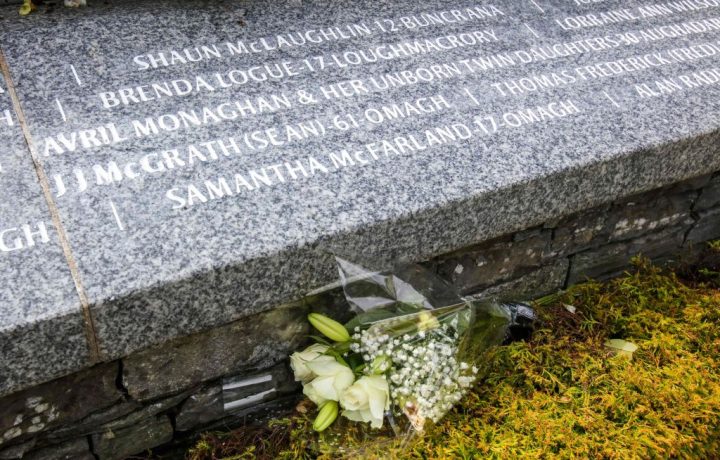On this day, 25 years ago, not long after the ink had dried on the Good Friday Agreement, a car bomb exploded in the market town of Omagh in Country Tyrone, Northern Ireland. The bomb had been set in the town’s busy main shopping area by dissident republican terrorists styling themselves as the ‘Real IRA’. The group had rejected the acceptance by Sinn Fein, the Provisional IRA’s political mouthpiece, that Irish unification could not be achieved by violence, and instead bathed a community in blood.
Twenty nine people were killed that day. It was a busy and sunny Saturday and the town, nestled in the foothills of the Sperrin mountains, was packed with shoppers and tourists. The warnings given ahead of the bombing were hopelessly inaccurate and led to victims being evacuated away from what was thought to be the target – the town’s courthouse – and into a killing zone that made it the worst single atrocity of the Troubles, a conflict people had fervently believed was over.
The shadow of dissident republican terrorism still hangs over Northern Ireland
Why is it so important to remember the victims of this attack? Twenty five years is, after all, an arbitrary measure of grief and loss. Yet there is something so profound and singular about this atrocity and its aftermath. It should haunt the minds of those who still say terrorism in the name of Irish unity was justified. It should give pause to anyone who supports the ongoing dissident threat in the country as somehow morally sane. It ought to inform the work of ‘mainland’ politicians and officials who are struggling to put the legacy of the Troubles to sleep with new legislation.
The tragedy of the death of twenty nine people and a set of unborn twins cannot be encompassed by this one piece alone. They were children, students, tourists, Catholics, Protestants and workers, and they were torn to pieces in the service of fanatics desperate to feed their own inadequacies. All it took was an ordinary saloon car filled with explosives that could be put together in any rural hay shed containing fertiliser – and a mindset of depraved indifference to the awful consequences.
The Omagh bomb was also significant because, in the absence of enough evidence by police to charge well-known suspects shortly afterwards, the families of the bereaved made legal history. The police on both sides of the border had a mountain of circumstantial evidence but were hampered by a dearth of witnesses, who either would not or could not come forward. Northern Ireland has endured a number of terrorist outrages, many committed by the IRA where no perpetrator has ever faced criminal trial. This is the cause of much enduring hurt. But the victims’ families refused to be victimised again in this way and set about raising money for a civil action suit (where the standard of proof was lower) against the bombers. Writs were served just days before the statute of limitations on the attack ran out.
After a nine year battle, their lawyer Jason McCue made legal history when a Belfast High Court found four men – Liam Campbell, Seamus Daly, Colm Murphy and Michael McKevitt – liable for the outrage and ordered them to pay more than £1.6 million in damages to the victims and their relatives. The case was never about the money – incidentally not a penny has since been paid – but it rendered the new generation of dissident terrorists identifiable and touchable by the law.
In February this year, the government announced an independent inquiry into the Omagh bombing, part of which will investigate whether intelligence failures by state forces meant it could have been prevented. While this is welcomed by campaigners, it must not detract from the central fact that the moral responsibility for the bomb must rest with those who planted it.
One of those found liable in the 2009 civil case, Michael McKevitt, died of cancer in 2021 following his release from prison in the Irish republic after a 20-year sentence for directing terrorism. While he won’t face earthy justice, it remains to be seen if the others will be held accountable with new and heavily contested government proposals to deal with legacy terrorism.
Twenty five years on from this awful day, the shadow of dissident republican terrorism still hangs over Northern Ireland. The ‘New IRA’ – another dismal permutation of the endless splintering within Irish republicanism – has been lethally active in the years after Omagh, murdering police officers who symbolise the normality they hate.
In February this year, a squad of these interchangeable nihilists tried to kill off-duty senior detective John Caldwell in front of terrified children less than 15 minutes’ walk from Omagh’s blighted town centre. Trust in the police has been devasted by a security breach just last week that could see the personal details of thousands of Northern Irish police officers fall into the hands of these people. In Northern Ireland, great hatred still has plenty of room for manoeuvre.
In her excellent book, Aftermath: The Omagh bombing and the families’ pursuit of justice, the writer Ruth Dudley Edwards follows the moving struggle of bereaved survivors for justice. She details the responses of then Sinn Fein president Gerry Adams and his deputy, the IRA leader Martin McGuinness, to the families begging them to publicly support an appeal for people to give information on the bombers to the police. While they did dissociate themselves from the attack and condemned it, both declined, with McGuinness declaring ‘I’m not an informer’.
The durability of this omerta is continuing to breathe life into the glowing embers of violent extremism that still exist in Northern Ireland to this day. While the terrorist threat there is vastly reduced, it is still potent enough for the security services to class it as ‘severe’, meaning an attack is highly likely.
The Real IRA was smashed asunder by a group of ordinary people who refused to be cowed by fanatics. ‘Whatever you say, say nothing’ is a telling line from the poet Seamus Heaney who was raised on the other side of the Sperrins. If the violent extremism that animated Omagh’s horror is to be finally wiped from history, that tendency must die too.







Comments